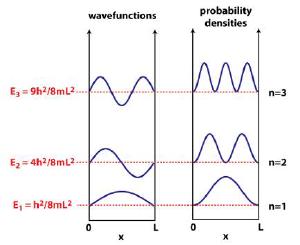Blog
Numbers Game
14 February 2014
There’s a popular video from Numberphile that shows how the sum of all the integers, adding them up forever is -1/12. If that ties your brain in a knot, it should. How is it possible for 1 + 2 + 3 + … to be a negative number? The answer is that it’s not…quite. It’s not that the video is wrong, but rather than it’s misleading. There is a way to assign a value of -1/12 to the sum, and it does have important applications in physics, but your intuition that adding all the integers should be infinity is correct. The catch is that dealing with infinities (unlike a finite sum of numbers) your answer can depend on just how you do the sum.
The key to understanding this mathematical weirdness is a concept known as convergence. If we take the sum 1 + 2 + 3 + … , with each number we add the sum gets larger and larger. Because of this it seems obvious that the sum must be infinity, but technically it means the sum doesn’t converge. In other words, as you keep adding numbers, there is no finite value that the sum approaches. In contrast, the sum 1/2 + 1/4 + 1/8 + … does converge. You might recognize it from Zeno’s famous paradox, where to run a marathon you first have to run half the distance, then half the remaining distance, then half of that, and so on. With each number we add, the sum gets closer and closer to 1. So the infinite series converges at 1.
In the video, they look at three infinite series:
S1 = 1 – 1 + 1 – 1 + …
S2 = 1 – 2 + 3 – 4 + …
S3 = 1 + 2 + 3 + 4 + …
They then claim that S1 = 1/2, from which they show 2 S2 = S1, and 3 S3 = – S2, thus S3 = -1/12. Of course if you look at each of these sums, you can see that none of them converge. The S1 sum keeps toggling between 1 and 0, and the S2 sum keeps oscillating between positive and negative numbers. So how can you say that the sums of these are finite numbers?
You can’t. Not in the way most people add numbers. But there is a way to sum divergent series so that they produce a finite number. It known as a Ramanujan summation, and basically it is a way of reordering things so that you get a finite number. It is a way of connecting convergent and non-convergent series, and it is a way of assigning these non-converging sums a unique number. Because of this, it is very useful in high level mathematics. So you are right in thinking that if you add up all the integers you will get infinity, but there is a way to generalize the summation to get a finite result.
This seems like a bunch of mathematical trickery, but it isn’t. It is a very useful tool for an aspect of physics known as renormalization.
To get an idea of how renormalization works, imagine a particle in a box. The more energy a particle has, the faster it moves. So a particle in a box will bounce around with a speed dependent on its energy. If we take all the energy out of the particle, it will just be stationary somewhere in the box. The key point is that for a simple particle it is possible to take all its energy way. So if you then imagine an endless sea of particles boxes, the lowest possible energy the sea can have is zero.
 Nicholas Blake
Nicholas BlakeBut things are different for a quantum particle in a box. A quantum particle can have particular energy levels, but because of the fuzzy nature of quantum particles you can’t take all the energy away from the particle. At its lowest possible energy it still has just a bit of energy. So if you imagine an endless sea of quantum particles, the lowest possible energy the sea can have is a bit + a bit + a bit + … = infinity.
In other words, the sum of a quantum sea is not convergent. But this doesn’t make any sense. If there is a sea of particles all in their lowest possible energy the sum shouldn’t be infinity. But because there is more general way to do infinite sums, you can use that to get a finite result. In other words, you can renormalize things to get an answer that makes physical sense.
The example I gave is overly simplistic, but in quantum physics these apparently infinite sums show up all the time, and we use renormalization to get meaningful results. In particular, the meaningful results we get agree with experiments.
The important thing to keep in mind is that while things like the Ramanujan sum are not simple sums like we’re used to, but they are a mathematically rigorous way to deal with infinite series, and this mathematical formalism is used in physical models that really work.
But the simple sum of integers is not -1/12.